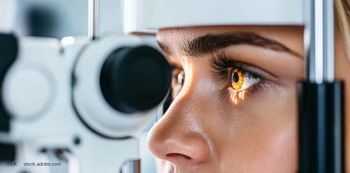
Case-controlled study explores hypothesized association between LASIK and early cataract surgery
Patients who underwent LASIK had undergone phacoemulsification 7 years earlier compared to a matched control group, according to the study authors.
Researchers from the Tecnologico de Monterrey, School of Medicine and Health Sciences, Monterrey, Mexico, reported1 that LASIK may be associated with the need for early cataract surgery (phacoemulsification) in otherwise healthy individuals.
During the LASIK procedure, photoablation of the cornea is performed using argon fluoride excimer laser (wavelength, 193 nm), granting low energy penetration, homogenous tissue ablation, and low mutagenicity,2 the authors, led by Gustavo Ortiz-Morales, MD, explained. In addition, secondary radiation associated with photoablation may penetrate the cornea and generate phototoxic, mutagenic, and cataractogenic effects,3-6 as seen in animal studies. Furthermore, suction applied by a microkeratome increases intraocular pressure and provokes a compression-decompression of the lens and vitreous, which might generate future lens and vitreoretinal pathology.7,8
In light of these potential toxicities, the authors conducted a case-controlled study that included 85 patients and 128 controls, in which the corrected-distance visual acuity (CDVA), axial length, and cataract grade were assessed.
The results showed that the mean age at the time of LASIK was 42.32 ± 9.24 years. The mean CDVA before cataract surgery, the mean axial length, and the mean nuclear grade did not differ significantly between the patients and controls.
However, age proved to be a relevant factor. The age of the patients who had undergone LASIK was significantly younger at the time of cataract surgery compared with the controls (mean age at the time of cataract surgery, 60.18 ± 7.46 years in the post-LASIK group and 67.35 ± 9.28 in controls; p < 0.0005).
The difference between the mean age at the time of LASIK and the mean age at the time of cataract surgery was 17.85 ± 5.72 years. The authors reported a positive association between the post-LASIK group and the age at the time of cataract surgery of 55 years or younger (odds ratio, 4.917, 95% confidence interval, 2.21–10.90, P < 0.001).
“LASIK may be associated with early phacoemulsification. Patients who underwent LASIK had undergone phacoemulsification 7 years earlier compared to a matched control group,” the authors concluded.
References:
Ortiz-Morales G, Ramos-Davila EM, Elizondo-Fernández B, et al. LASIK is associated with early cataract surgery in healthy patients. Int Ophthalmol. 2023;44:125;
https://doi.org/10.1007/s10792-024-03060-6 Krauss JM, Puliafito CA, Steinert RF. Laser interactions with the cornea. Surv Ophthalmol. 1986;31:37–53;
https://doi.org/10.1016/0039-6257(86)90050-0 Costagliola C, Balestrieri P, Fioretti F. et al. ArF 193 nm excimer laser corneal surgery as a possible risk factor in cataractogenesis. Exp Eye Res. 1994;58:453–457;
https://doi.org/10.1006/exer.1994.1038 Müller-Stolzenburg NW, Müller GJ, Buchwald HJ, Schründer S (1990) UV exposure of the lens during 193-mm excimer laser corneal surgery. Arch Ophthalmol. 1990;108:915–916;
https://doi.org/10.1001/archopht.1990.01070090017005 Rasmussen RE, Hammer-Wilson M, Berns MW (1989) Mutation and sister chromatid exchange induction in Chinese hamster ovary (cho) cells by pulsed excimer laser radiation at 93 nm and 308 nm and continuous UV radiation at 254 nm. Photochem Photobiol. 1989;49:413–418;
https://doi.org/10.1111/j.1751-1097.1989.tb09188.x Waxler M, Hitchins VM. Optical radiation and visual health. 1986;232. CRC Press Inc., Boca Raton, FL.
Arevalo JF, Freeman WR, Gomez L. Retina and vitreous pathology after laser-assisted in situ keratomileusis: is there a cause–effect relationship? Ophthalmology. 2001;108:839–840;
https://doi.org/10.1016/s0161-6420(00)00471-1 Mirshahi A, Kohnen T. Effect of microkeratome suction during LASIK on ocular structures. Ophthalmology. 2005;112:645–649;
https://doi.org/10.1016/j.ophtha.2004.11.046
Newsletter
Don’t miss out—get Ophthalmology Times updates on the latest clinical advancements and expert interviews, straight to your inbox.













































.png)


